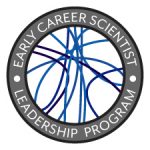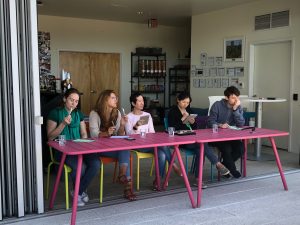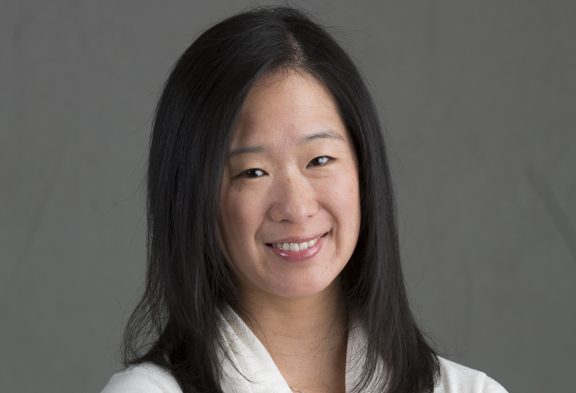 As the Vice President of Research at 23andMe, Joyce Tung has a career that blends together her love for personalized medicine and accessible science for all. She also continues to support her team and help them move 23andMe’s mission forward. Here, Joyce describes her journey through her 12 years at 23andMe and offers advice for supporting a team of scientists.
As the Vice President of Research at 23andMe, Joyce Tung has a career that blends together her love for personalized medicine and accessible science for all. She also continues to support her team and help them move 23andMe’s mission forward. Here, Joyce describes her journey through her 12 years at 23andMe and offers advice for supporting a team of scientists.
In the Decoding Life series, we talk to geneticists with diverse career paths, tracing the many directions possible after research training. This series is brought to you by the GSA Early Career Scientist Career Development Subcommittee.
Joyce Tung has been interested in the field of personalized medicine since high school and has worked throughout her career studying topics such as human fertility and skin pigmentation. After Joyce earned her PhD in Genetics at the University of California, San Francisco, she went on to take a traditional postdoctoral position at Stanford University. During her time as a postdoc, she started consulting part-time at 23andMe. Soon after, she became a full-time Human Geneticist, eventually growing into her current role as Vice President of Research. In this role, she manages projects, supports her team, and helps scientists develop new skills and overcome obstacles—all while working on building a healthy company culture focused on clear communication.
During your graduate and postdoc experiences, what career paths were you considering?
I initially didn’t think about my career path too hard. When I started my PhD, I thought I was going to follow the academic track because I didn’t have a good sense of what the other options were. During the second half of grad school, I started wondering if academia was really for me, and it became more obvious that there were other interesting paths that felt more appropriate, but I had been stuck in the academic mindset for so long that I hadn’t totally convinced myself that a non-academic path was the way to go.
I applied to a few non-academic positions while finishing grad school, and it became clear I wasn’t qualified enough for them. I wasn’t getting any interviews and most positions required postdoctoral research experience. I decided to do an academic postdoc after grad school because it would prepare me by gaining skills to take on industry positions or to continue with academic research.
As a postdoc, I envisioned that I would continue as a bench scientist, because in my mind industry roles were like roles in academic labs, just in a different setting. I was also playing with the idea of pursuing science writing because I liked writing and had contributed to a few pieces here and there while I was in graduate school.
How did you find your position at 23andMe, and what did your first role look like?
About five or six months into my postdoctoral position, I saw a flyer for 23andMe that was advertising for a content curation and science writer role. I was intrigued by what they were trying to accomplish, and I thought that it might be a good opportunity for me to get some industry experience, as I toyed with both the ideas of science writing and becoming a bench scientist.
Although I wasn’t ready to leave my postdoc at that time, I thought it couldn’t hurt to see if there was a part-time opportunity. I met with 23andMe, and they offered me a part-time consulting position. I then checked with my advisor at the time. He was fine with that arrangement, so I took the part-time position for about nine months.
When I first joined 23andMe, they were just starting to put together a product, so a lot of what I was doing was genetic content curation. I reviewed scientific literature, researched what we could actually say about certain genetic variants, wrote customer-facing content, and helped with some of the basic educational FAQs.
What made taking a position at 23andMe so appealing compared to other companies?
I believe in the goal and mission of 23andMe and in getting science out of dusty old journals and making it accessible to everyone. I’ve also been interested in personalized medicine since high school. Knowing and believing this has taken me through my twelve years at 23andMe. In addition, I could tell the group of people at 23andMe were going to do both good science and the right thing by the customer.
I also felt that 23andMe was growing and going through so many changes. The learning curve has always been steep, which is exciting. I’ve been able to learn about business functions I might have not have had the opportunity to learn about in academia or in a larger company, where I might have been more siloed and distant from some teams.
What skills did you work on during your graduate and postdoc work that equipped you to transition into industry?
I certainly didn’t intentionally do things thinking they would help me with my career later; I just didn’t have that kind of foresight. Looking back, one thing that was helpful was learning volunteering as co-chair of the Graduate Student Association at UCSF. Being a part of that organization taught me how to lead other volunteers, which was a really useful skill. This is something I look for in other people—whether they can lead and influence without authority. This is a valuable skill, especially when working in a company where you’re interacting with teams of people and everyone is working on multiple projects.
The other thing I did in grad school and as a postdoc was mentor people. It wasn’t very glamorous; I taught people how to pipette, do PCR, run a gel, etc., but the process of breaking down something you know to someone else is a useful skill. These were opportunities for me to learn how to coach somebody to be successful without bossing them around.
What was it like leaving your academic postdoc to go to 23andMe, and what were some of the initial challenges you experienced?
I’m a risk-averse person, so I was nervous about leaving the security of a postdoc with a great lab and advisor for a company that might not exist in a year. I consulted with my cousin, who was at Novartis, about taking the leap, and he said, “Listen, taking a year of experience in industry, even if the company folds after that, is still going to help you more than another year of not having that work experience.” So, between getting over my fear of doing something a bit risky and ensuring that I was leaving my advisor in a reasonable position with my project, I joined 23andMe full-time.
In your role as Vice President of Research how do you stay excited about the work going on when you’re mostly managing others?
 I‘ve realized that I get the most satisfaction out of helping people get things done. I enjoy removing obstacles, supporting scientists as they develop new skills, and helping them be as productive as possible. If someone is able to get past an obstacle, learn something new, and achieve a goal, then I’ve done my job. At the end of the day, I love science. I love scientists. I love all their glorious nerdiness. I really enjoy working with them.
I‘ve realized that I get the most satisfaction out of helping people get things done. I enjoy removing obstacles, supporting scientists as they develop new skills, and helping them be as productive as possible. If someone is able to get past an obstacle, learn something new, and achieve a goal, then I’ve done my job. At the end of the day, I love science. I love scientists. I love all their glorious nerdiness. I really enjoy working with them.
How do you manage leading 80 people and ensure everyone is doing well and staying on track with the company’s mission?
In terms of managing other people, I’m learning as I go and seeking advice from people who have been in this position before. But the number one thing that helps me is that I’m surrounded by extremely good people. I work at developing my team and building a relationship with them. That’s how we keep everything aligned.
We also try to communicate high-level goals across the team so everybody has the same information. As scientists, I know it’s really important to not only know what you are supposed to do, but why. The scientists I manage will be more motivated to do something if it makes sense. We as managers need to provide them the context to see the bigger picture as opposed to a faceless, nameless task.
I have also implemented things like office hours when people can come by and talk about whatever they want. I also host a “fruit time chat” once a week where I go to our kitchenette area and give people a space to chat more casually about topics that don’t require privacy. We also have team lunches where employees are placed in random groups, which increases opportunities to talk with people they may not regularly work with or report to.
If you were going to give advice to someone looking for positions at 23andMe or other companies with a similar structure, what would you tell them?
By the time you are invited for an interview, we’re guessing you probably have pretty good technical skills to do the analysis needed, create scientific instruments, or something like that. What I think most people undervalue are the professional soft skills. Do you communicate well? Do you work well with others? When you have a conflict, do you know how to resolve it? These skills are incredibly important when working with a team where you will likely be a part of many projects.
To demonstrate these important skills to potential employers, take on leadership positions, practice communication, and learn conflict resolution techniques. To rise in the ranks and take on more responsibility in a company, it is really a combination of those technical skills and professional soft skills.
About the author:
 Amanda Shaver is a Co-Chair on the Early Career Scientist Career Development Subcommittee and a PhD candidate at the University of Georgia.
Amanda Shaver is a Co-Chair on the Early Career Scientist Career Development Subcommittee and a PhD candidate at the University of Georgia.
Learn more about the GSA’s Early Career Scientist Leadership Program.













